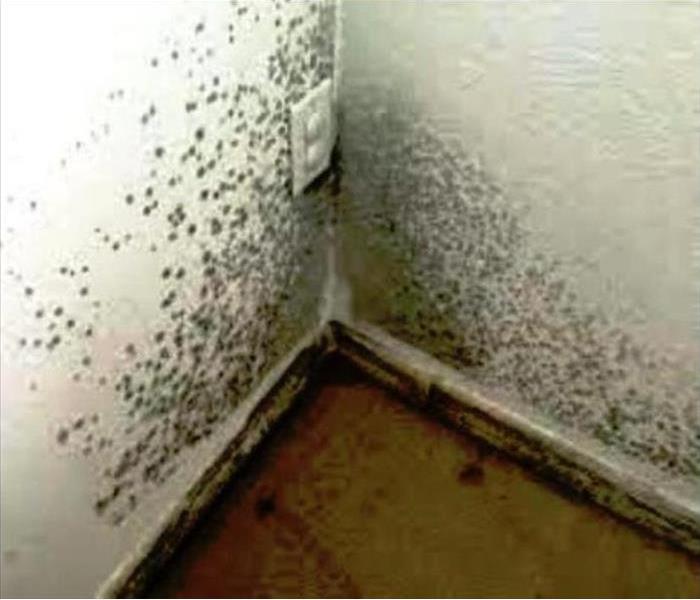What You Need to Know About Mold Remediation and Removal
2/18/2019 (Permalink)
That creepy cloud of black or green on the wall, ceiling or floor indicates fungal damage. It may occur due to a damp, humid environment, a flood, rain entering the home, or many other reasons. Microbial growth means one of many types of fungi are present. An environmental hygienist can determine what issues present in the home or business, recommend the proper treatment and mitigation specialists who can remediate the issue. Immediate analysis and mitigation is vital though because some fungi create dangerous health risks and can damage the area of growth, states the Centers for Disease Control.
There's a fungus among us.
That little patch of green or black fungus can wreak huge damage. The water entry from a leaky wood window allows fungal growth to foster, which untreated, rots the frame and windowsill.
How does one tell what is present though? An environmental hygienist can analyze the growth present and recommend the proper mitigation. Briefly though, the three differ in the following ways.
Fungus: The various types of fungi comprise their own kingdom separate from the animal and plant kingdoms. Fungi include mildew, mold, mushrooms, puffballs and yeast.
Microbial growth: The multiplication of microorganisms which may include algae, bacteria, diatoms, fungi, and plankton.
Mildew: A type of fungus that absorbs its food from the organic matter it grows on and usually appears as a white or gray powdery residue.
Mold: A type of fungus that grows in humid, warm conditions. Like mildew, it absorbs its food from the organism it attaches to by secreting enzymes to break down the substance.
Is there a mold cleanup fairy?
Although no mold cleanup fairy exists, an environmental hygienist can recommend the proper mitigation techniques for each type of microbial growth and a contractor who can clean and sanitize the area. If an area like a window frame or drywall has been damaged by mold, it needs replacement. Mitigation means more than a surface cleaning. Spores can travel, so the contractor will likely examine the heating/ventilation/air conditioning (HVAC) system for contamination. If contaminated, don't run the system until it is remediated. Some sentimental items or art pieces require a specialist to clean. The CDC offers an online guide to mold cleanup and specialized contractors.
The upshot is that any microbial growth needs mediation, but the fungus present could be mildew, mold, mushrooms, puffballs, or yeast. Consult an environmental hygienist to determine what growth type occurs. Hire a professional contractor to handle mold cleanup. This may extend to more than the area obviously affected since fungal spores travel and may have entered the HVAC system. Certain types of fungi create hazards and must be quickly addressed to alleviate the hazard.

 24/7 Emergency Service
24/7 Emergency Service
